Search results for: 'For'
-
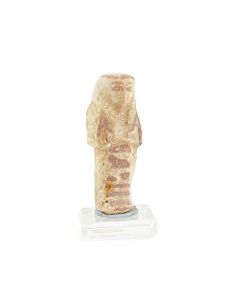 Ushabti for Henut-tawy
Ushabti for Henut-tawyThis Egyptian funerary statuette was found in the 19th century in the northern part of Abydos. It dates to the 22nd dynasty.
Price: on request Shabti for Ly-hotep-em-mut
Shabti for Ly-hotep-em-mutStunning Egyptian funerary figurine from the time of the 22nd dynasty. Formerly in the Rolls-Royce family collection.
Price: on request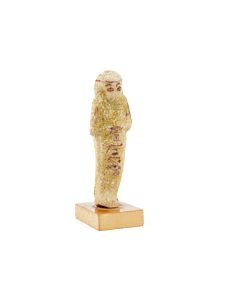 Egyptian ushabti for Nisi-ta-udjat-achet
Egyptian ushabti for Nisi-ta-udjat-achetInteresting figurine made of green faience with black paint. A typical funerary statuette from the Third Intermediate Period of ancient Egypt.
Price: on request Egyptian ushabti for Horus-in-Chemmis
Egyptian ushabti for Horus-in-ChemmisFunerary statuette made of turquoise faience with black paint and cute name inscription.
Price: on request Shabti for Djed Khonsu
Shabti for Djed KhonsuExceptional funerary statuette from Deir el-Medina. Third Intermediate Period of Ancient Egypt.
Price: on request Egyptian ushabti for Pa-di-pepet
Egyptian ushabti for Pa-di-pepetThe tomb of Pa-di-pepet was discovered in 1893 west of the Pyramid of Teti at Saqqara. His funerary statuettes were given to important museums and into private collections. Dating to the reign of Pharaoh Psamtik I and his successor Necho II.
Price: on request Funerary statuette for Princess Henuttawy
Funerary statuette for Princess HenuttawyThe Egyptian shabti is from the daughter of Pinudjem II who ruled Egypt during the Third Intermediate Period. It was excavated in the 1840ies at the Ramesseum.
€12,400 Statue of Anubis in jackal form
Statue of Anubis in jackal formThe 25cm long figure was probably once mounted on a sarcophagus lid. In this position Anubis had the function as god of embalming.
Price: on request Mummyform Near Eastern idol
Mummyform Near Eastern idolThe unusual bronze figurine is an idol from Anatolia or the Near East. Around 1000 BC.
Price: on request Ägyptisches Amulett in Form des Udjatauges
Ägyptisches Amulett in Form des UdjataugesVoll dekoriertes Udjatauge (Auge des Horus) mit schwarz aufgetragener Pupille und geritzten Details. Aus der 22. bis 25. Dynastie des Alten Ägyptens.
Price: on request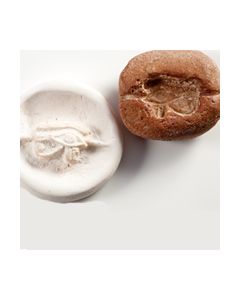 Ägyptische Gussform aus der 3. Zwischenzeit
Ägyptische Gussform aus der 3. ZwischenzeitGussform aus Terrakotta, für ein Amulett in Form eines Udjatauges. 22. bis 25. Dynastie, Dritte Zwischenzeit des Alten Ägypten.
Price: on request Protogeld in Form einer Pfeilspitze
Protogeld in Form einer PfeilspitzeVormünzliche Geldform aus dem 7. - 6. Jh. v. Chr., geprägt in Istros, perfekte Erhaltung. Länge 44 mm.
Price: on request Ägyptische Gussform aus der Amarna-Zeit
Ägyptische Gussform aus der Amarna-ZeitGussform aus Terrakotta, für ein Amulett in Form eines Blütenblatts. 18. bis 19. Dynastie, 1600 v. Chr. bis 1100 v. Chr., Altes Ägypten.
Price: on request Protogeld in Form einer Pfeilspitze
Protogeld in Form einer PfeilspitzeVormünzliche Geldform aus dem 7. - 6. Jh. v. Chr., geprägt in Istros, guter Erhaltungszustand. Länge 32 mm.
Price: on request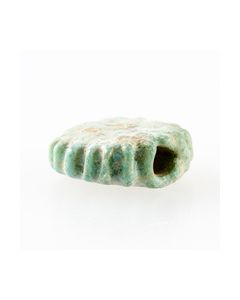 Stilisiertes Udjatauge in Rosettenform
Stilisiertes Udjatauge in RosettenformSonderform eines vielfachen Udjat-Auges. Kreisförmiges Amulett mit gezackter Schmalseite. Dritte Zwischenzeit bis ptolemäische Zeit
Price: on request Protogeld in Ringform, diverse Ausprägungen
Protogeld in Ringform, diverse Ausprägungen13 Ringgeldexemplare und ein Pelta-Amulett. Exzellent erhalten, mit schöner Fundpatina. In dieser Formenvielfalt selten angeboten.
Price: on request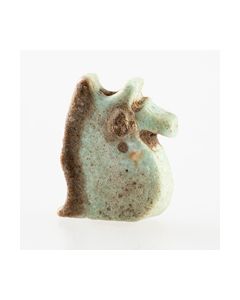 Ägyptisches Amulett in Form des Udjatauges
Ägyptisches Amulett in Form des UdjataugesUdjatauge aus der Dritten Zwischenzeit, 22. bis 25. Dynastie. Beliebtes Amulett, dem eine magische Schutzfunktion zugesprochen wurde.
Price: on request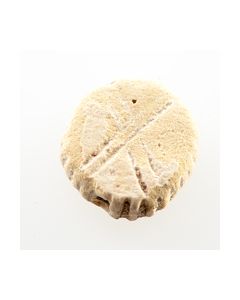 Stilisiertes Udjatauge in Rosettenform
Stilisiertes Udjatauge in RosettenformSonderform eines vierfachen Udjat-Auges. Kreisförmiges Amulett mit gezackter Schmalseite. Darauf X aus doppelten Linien. Dritte Zwischenzeit, 22. bis 25. Dynastie.
Price: on request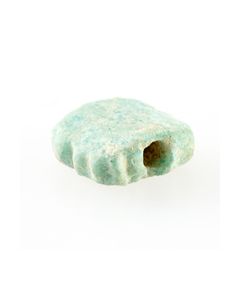 Ägyptisches Amulett in Rosettenform
Ägyptisches Amulett in RosettenformSonderform eines vielfachen Udjat-Auges. Kreisförmiges Amulett mit gezackter Schmalseite. Dritte Zwischenzeit bis ptolemäische Zeit
Price: on request Keltisches Protogeld in Ringform
Keltisches Protogeld in RingformUngewöhnliches Belegstück dieser frühesten Währungsform, verziert durch drei Doppelkugeln. Exzellenter Zustand mit schöner Patina.
Price: on request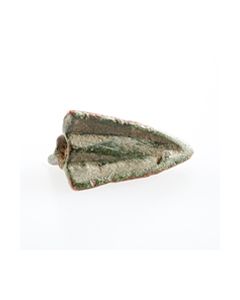 Schön geformte skythische Pfeilspitze
Schön geformte skythische Pfeilspitzeantike Bronzepfeilspitze. Dreiflüglig. Exzellente Erhaltung mit schöner Patina. Typisch für skythische Völker ab ca. 700 v.Chr.
Price: on request Schön geformte skythische Pfeilspitze
Schön geformte skythische Pfeilspitzeantike Bronzepfeilspitze. Dreiflüglig. Exzellente Erhaltung mit schöner Patina. Typisch für skythische Völker ab ca. 700 v.Chr.
Price: on request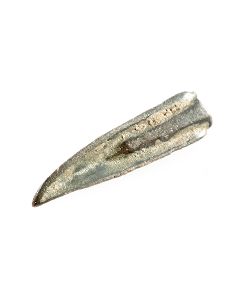 Schön geformte skythische Pfeilspitze
Schön geformte skythische Pfeilspitzeantike Bronzepfeilspitze. Museale Erhaltung mit schöner Patina und Bodenablagerungen
Price: on request Hochgradig seltenes skythisches Protogeld in Pfeilform
Hochgradig seltenes skythisches Protogeld in Pfeilform7. - 6. Jh. v. Chr., Schwarzmeerregion, sehr guter Zustand
Price: on request Canaanite oil lamp
Canaanite oil lampShallow bowl with high rim pinched to form single wick-rest, convex underside. From the collection of Prof. Ritschel, Salzburg, decorated many times, for example in 1995 when the Republic of Austria awarded its Decoration for Science and Art.
Price: on request Iron spear head worth the exhibition in a museum
Iron spear head worth the exhibition in a museumVery nice patina, smooth surface, rare degree of preservation for an iron object.
Price: on request Egyptian faience statuette of Taweret
Egyptian faience statuette of TaweretTypical depiction of the protective goddess for pregnant women. A piece of superior quality and great detail. From the Late Period of Ancient Egypt.
€22,500 Massive bronze lance head from the Near East
Massive bronze lance head from the Near EastFrom the collection of Prof. Ritschel, Salzburg, Austria, president of the local museum association, author of over 50 history books, decorated many times for his achievements.
Price: on request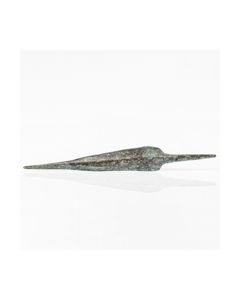 Bronze lance head from the Near East
Bronze lance head from the Near EastFrom the collection of Prof. Ritschel, Salzburg, Austria, president of the local museum association, author of over 50 history books, decorated many times for his achievements.
Price: on request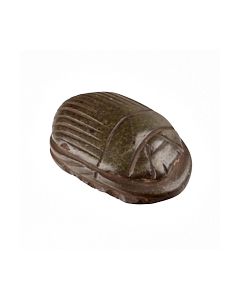 Egyptian scarab
Egyptian scarabThe scarab is relatively big for its kind. It is made of nice dark green serpentinite. From the Late Period of Ancient Egypt.
Price: on request Very long iron lance head
Very long iron lance headExcellent condition for an iron object, mainly intact with very nicely preserved surface. From an old German private collection, acquired in the early 1980s.
€450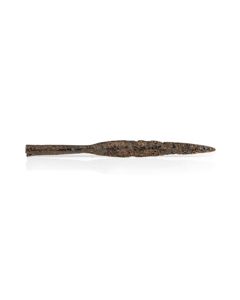 Very long iron lance head
Very long iron lance headExcellent condition for an iron object, mainly intact with very nicely preserved surface. From an old German private collection, acquired in the early 1980s.
€390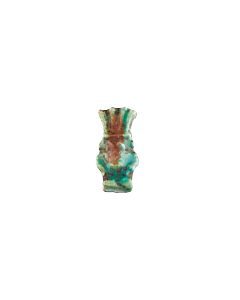 Egyptian amulet of Bes
Egyptian amulet of BesProtective amulet with dwarf god Bes. A typical specimen for its kind from Ancient Egypt.
Price: on request Luristan horse pendant
Luristan horse pendantThe spectacular creature with conjoined horse bodies is characteristic for the bronze works of Lurstian. From the early 1st Millenium BC.
Price: on request Large Luristan horse pendant
Large Luristan horse pendantThe spectacular creature with conjoined horse bodies is characteristic for the bronze works of Luristan. From the early 1st Millenium BC.
Price: on request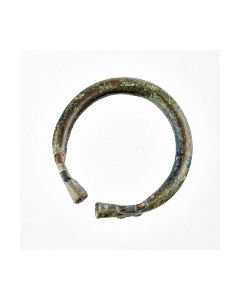 Bracelet from Luristan with animal terminals
Bracelet from Luristan with animal terminalsA high degree of abstraction for the animal heads and a wonderful blue patina make this piece a highlight for Iranian bronze works.
Price: on request

